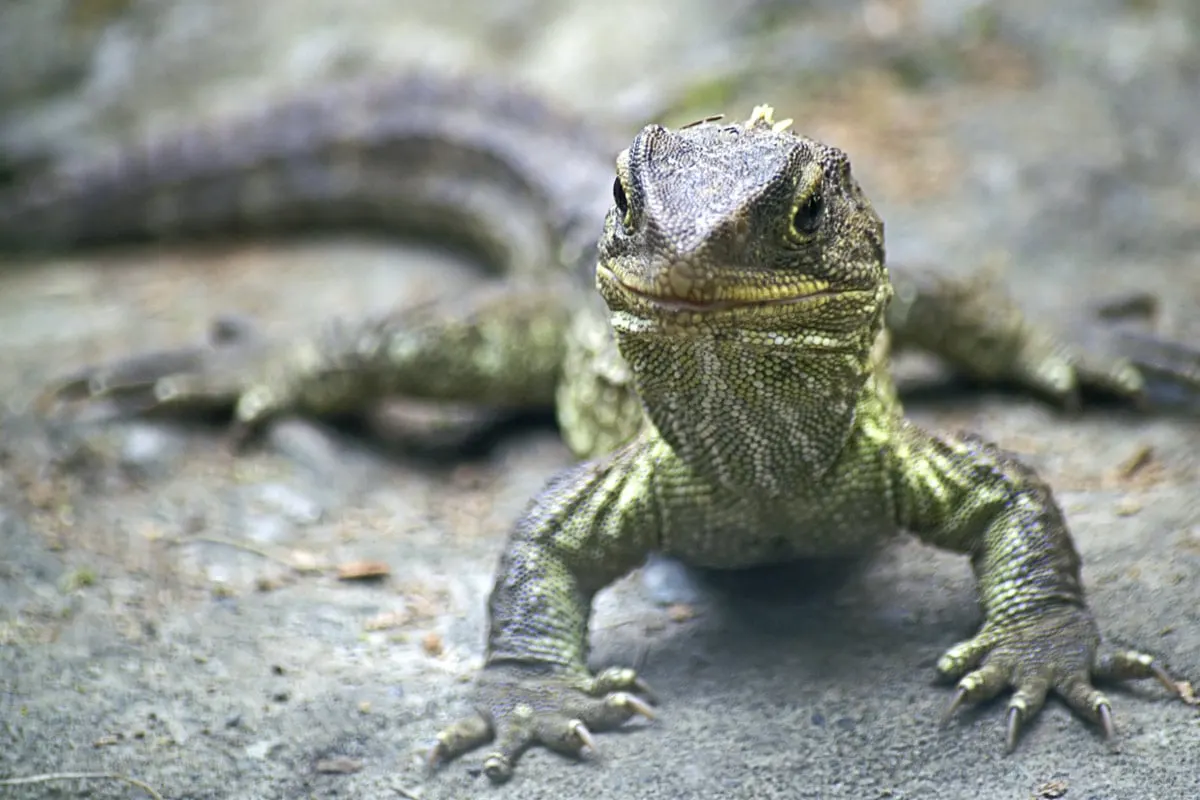Skip Forward
Piopiotahi-Milford Sound has a fascinating past. Here, we’ll unravel the captivating narrative behind the creation and cultural heritage of the iconic fiord that attracts almost a million visitors from across the globe every year.
Geological Beginnings
Ancient geological History
The geological story of Piopiotahi-Milford Sound begins around 400 million years ago when all the continents of the world were joined into one huge landmass called Pangaea. During this time, the Fiordland area was under the sea, and the animals and plants on Earth were tiny, blob-like creatures barely resembling the flora and fauna we know today.

Over millions of years, as the tiny plants and animals died, their remains, along with debris from the land above the sea, fell below the water’s surface and built up layers on the sea floor. The weight of these layers and the water above caused massive pressure that transformed them into the hard, thick rock that would later become part of Fiordland’s towering mountain ranges.
Gondwana Formation
By 200 million years ago, segments of the Earth’s crust, called tectonic plates, were moving around due to molten rock and magma swirling in the Earth’s core. As the plates slid by and crashed together, Pangaea split apart, and the continents of the Southern Hemisphere remained stuck together in a supercontinent called Gondwana. The Earth’s flora and fauna had also undergone millions of years of evolution by this time, becoming species that more closely resemble those we know today.
By 180 million years ago, the New Zealand landmass was forming at the edge of Gondwana. Tectonic plate movements caused volcanoes to form and areas of the sea floor to gradually lift above the water’s surface, forming flat lands and mountain peaks.
New Zealand’s Voyage
Constant plate movement caused numerous land changes all over the globe, and by 65 million years ago, New Zealand had fully separated from Gondwana and was an isolated Island inhabited by various species of Gondwanan origin.
From this time onwards, New Zealand sat over the boundary of two tectonic plates, and movement at the plate boundary caused various episodes of mountain building, volcanic activity, land sinking, and land uplift, causing many landscape transformations and influencing species evolution.
‘Recent’ Geological History
By the later part of the last Ice Age, around 20,000 years ago, the New Zealand landmass had been transformed into the shape we know today, and large glaciers calved their way through Fiordland’s landscape.
When the ice age ended, around 14,000 years ago, the glaciers retreated, leaving behind large U-shaped valleys. In Milford Sound, the retreating glacier allowed for sea water to fill in the resulting valley, forming the famous fiord.
History in a Landscape
Wildlife Wonders
New Zealand’s unique wildlife is a result of its separation from other landmasses around 80 million years ago when it first began breaking away from Gondwana. The New Zealand landmass carried some species away with it on its ocean voyage, and many arrived in New Zealand over millions of years, either by drifting here, flying, or being blown on the wind.
Due to the isolation, the species in New Zealand evolved differently from their relatives elsewhere in the world, becoming specialists in New Zealand’s environment. With a lack of predatory mammals, many bird species lost their ability to fly. New Zealand now has one of the world’s highest rates of endemic species: species that are found nowhere else on Earth.
Many of these unique species can be seen in places around Fiordland, such as the rare, flightless Takahē. Fiordland is also home to several podocarp tree species directly descended from Gondwanan species, making their lineages over 80 million years old.
Geological Marvels
All around Fiordland, there is evidence of its fascinating past. The rocks of its famous mountain peaks date back to 400 million years ago, and mudstone and sandstone are scattered about the hills and valleys filled with tiny marine fossils, showcasing the various episodes of land-sinking and uplift that have occurred during New Zealand’s voyage from Gondwana.
One of the most famous rock types in the area is Tangiwai, the most ancient type of pounamou (greenstone), around 400 million years old. The clear, crystal-type form of bowenite rock ranges in colour from olive-green to deep blue and was formed within the earth by extreme heat and pressure.
Māori History
Discovery of Piopiotahi
Māori, the Indigenous people of Aotearoa, New Zealand, discovered Piopiotahi-Milford Sound between 1300-1500. Early tribes traveled to the area to fish, hunt, and collect tangiwai and other pounamu. The tangiwai was highly prized for its rarity and beauty and primarily crafted into jewelry. Other pounamu types were harder and used for weapons like toki (adze).
The Calving of Piopiotahi
Māori legend held that the area was calved by the demi-god, Tu-te-raki-whanoa, who desired a place full of birds, fish, and safe waterways. Using his Toki, he calved out the rugged landscape, which was so beautiful, that when the goddess of night and death, Te-Hine-nui-to-pō, visited the area, she thought it was so beautiful that no humans should stay there. To prevent humans from staying too long, she released ‘namu,’ the troublesome sandfly, to ward off anyone overstaying their welcome.
The Naming of Piopiotahi
Piopiotahi-Milford Sound received its first name from a small thrush-like bird, called a Piopio, which is now extinct. Piopiotahi means ‘a single piopio,’ and the name originates from the story of Māui, a demigod, who fought Te-Hine-nui-to-pō to win mortality for mankind. Accompanying Māui on his quest was a single piopio, and when Māui lost his battle, the piopio flew to Piopiotahi to mourn the loss in the sacred place.
European History
Early European Exploration
Captain Cook was the first European to define the general outline of Aotearoa, New Zealand, but during his voyages, he missed Piopiotahi-Milford Sound. He sailed past the area twice, both times disregarding the bay entrance as too small to lead to large bays. He instead set up camp in Dusky Sound in 1773, a smaller fiord to the south.
In 1809, a Welsh sealer named John Grono was exploring the Fiordland coast when he was caught in a storm. He stared his ship and crew into a small bay entrance to seek refuge from the storm. Once inside the entrance, the beautiful landscape was revealed, and he dubbed the area ‘Milford Haven’ after a place in his hometown of Pembrokeshire.
In 1851, a Welsh explorer named John Lort Stokes anchored his ship, the HMS Acheron, in the area and named it Milford Sound. Although we now know he was mistaken in calling the area a sound, this version of its European name has stuck. Later on, the wider area was named Fiordland to somewhat rectify the naming error.
The Hermit of Milford
Though John Grono and his crew were the first European people to enter Piopiotahi, they weren’t the first to settle there. In 1877, after leaving the New Zealand Coastal Shipping Service, an adventurous Scotsman named Donald Sutherland set sail for Dunedin with his dog in a small open boat. The pair passed through Foveaux Strait, up the Fiordland coast, and found themselves in Milford Sound. Sutherland built a hut and lived there with his dog for the next two years, earning himself the title of the “Hermit of Milford.”
During his time in Piopiotahi- Milford Sound, Sutherland, and a fellow explorer found the famous Sutherland Falls, and the New Zealand government commissioned him to build a track to the falls. He also took trips back and forth to Dunedin and on one of these trips he met his wife Elizabeth, who accompanied him back to Piopiotahi-Milford Sound, where they lived together for 38 years.
Early Tourism
By 1890, word had spread about the incredible, untouched beauty of Milford Sound, and the area was becoming increasingly popular for adventurous hikers. To take advantage of the increasing popularity, the Sutherlands built the first Hotel in Piopiotahi - Milford Sound. Popularity increased further in the late 1890s when British Writer Rudyard Kipling visited and dubbed the area “the eighth wonder of the world.”
The Homer Tunnel
The idea for the Homer Tunnel came in 1889 when a goldpanner named William Homer found the Homer Saddle. Seeing how visitation to Milford was limited to either boat, horseback, or hiking, he came up with the idea to bore a tunnel through the mountain under the Homer Saddle to provide direct access to Piopiotahi-Milford Sound.
Work on the tunnel began around 1934. It was 19 years of very hard, dangerous work, and avalanches claimed the lives of many over the years. Finally, in 1953, the Homer tunnel was opened, seeing a dramatic increase in tourism.
From 1990-1998, Fiordland officially became declared a World Heritage area, and the Ngāi Tahu Claims Settlement Act resulted in Piopiotahi-Milford Sound becoming the official name for the area, in recognition of the principal South Island Tribe, Ngāi/Kāi Tahu, being the first people of the area and having their rights to the land and its care be protected by law.
Visiting Piopiotahi-Milford Sound Today
Today, Piopiotahi-Milford Sound receives approximately 1,000,000 visitors a year, and there are numerous options for viewing the area. Because of the Homer Tunnel, visitors can easily drive from Te Anau to Piopiotahi. There are many options for viewing the landscape from the water, with plenty fiord cruise operators to choose from, and kayaking under waterfalls makes for an exhilarating experience. There are even several options for viewing Fiordland from above with small airplane and helicopter flights.
Conserving Piopiotahi-Milford Sound
Though the destination receives so many visitors, the magnificent scenery remains, with the towering cliffs, unique wildlife, and tumbling waterfalls making every visit an unforgettable experience. The preservation and protection of the area would not be possible without the hard work that goes into conserving the precious wildlife and ecosystems every day.
The Department of Conservation (DOC) is the government organisation responsible for conserving New Zealand’s national parks, including Fiordland. Along with dedicated locals and some passionate tour operators, they help to keep the area as safe and free from threats as possible.
There are many ongoing conservation projects in the area, such as the Tawaki project to protect the rare Tawaki (Fiordland Crested Penguin), and the Sinbad Sanctuary Project, which has allowed native birds and lizards of Piopiotahi - Milford sound to flourish. Daily pest control also helps to protect the unique flora and fauna from introduced mammals like rats, stoats, and possums. By choosing responsible tour operators and placing donations in the designated donation boxes throughout Fiordland Nation Park, you, too, can become a valuable contributor to the conservation of Piopiotahi-Milford Sound.
Piopiotahi-Milford Sound stands as more than a geographical wonder; it's a living tale of resilience, cultural significance, and environmental stewardship. As visitors continue to be enchanted by its beauty, preserving and appreciating its rich history ensures a sustainable legacy for generations to come.
_edited_edited.png)














